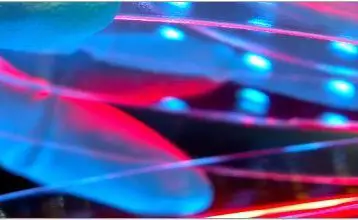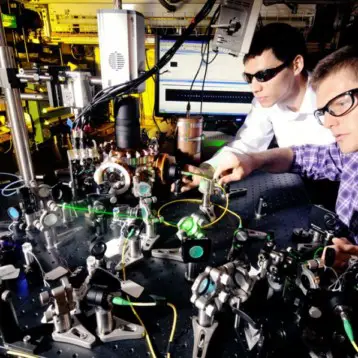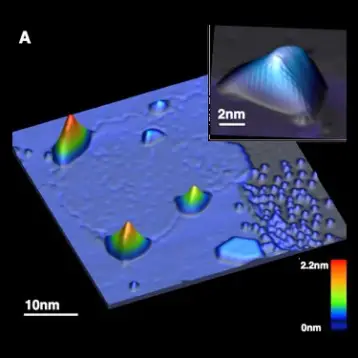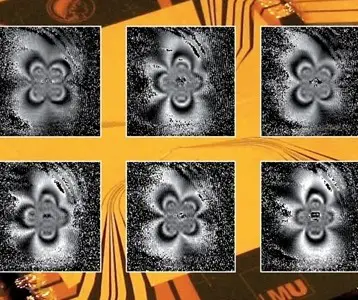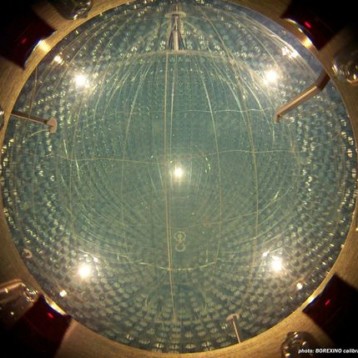Neutrinos are elementary particles that usually travel close to the speed of light. Their electric charge is neutral, and they are able to pass through ordinary matter almost undisturbed. This makes neutrinos extremely difficult to detect; in fact, their mass is so small that once scientists believed it to be zero. These particles are generated by nuclear reactions in the sun, and according to this recent study they suffer from an identity crisis as they cross the universe, morphing between three different “flavors.” Their antimatter counterparts (which are identical in mass but opposite in charge and spin) do the same thing.
Now, a team of physicists found surprising differences between the flavor-switching behavior of neutrinos and antineutrinos. If confirmed, the finding could help explain why matter, and not antimatter, dominates our universe. This issue has been addressed since the 1960s, when physicists started gathering evidence that neutrinos can switch, or oscillate, between three different flavors: muon, electron, and tau. While each of these has a different, unique mass, scientists could not rule out the possibility that other states, or “types”, exist.
The experiments relied on data produced by the Booster Neutrino Experiment (MiniBooNE) at the Fermi National Accelerator Laboratory. The results were achieved by sending beams of neutrinos or antineutrinos down a 500-meter tunnel, at the end of which sits a 250,000-gallon tank of mineral oil. When neutrinos or antineutrinos collide with a carbon atom in the mineral oil, the energy traces left behind allow physicists to identify what flavor of neutrino took part in the collision. Neutrinos, which have no charge, rarely interact with other matter, so such collisions are rare.
The article, published in the journal Physical Review Letters, describes the first ever observation of CP symmetry violation; this symmetry was theorized to explain why matter and antimatter should behave in the same way. Georgia Karagiorgi, an MIT graduate student and one of the leaders of the study, said: “People are very excited about it because it suggests that there are differences between neutrinos and antineutrinos.” CP symmetry violation has been seen before in quarks, another type of elementary particle that makes up protons and neutrons, but never in neutrinos or electrons.
The results might have further impact than originally thought: Physicists might be forced to revise their standard model, which catalogs all of the known particles that make up matter. The model now posits only three flavors of neutrino, but a fourth (or fifth or sixth) may be necessary to explain the new results.
“If this should be proven to be correct, it would have major implications for particle physics,” says John Learned, professor of physics at the University of Hawaii. Although the findings are highly accurate – found with a confidence level just below 99.7 percent – it is yet to be announced as breakthrough. The standard is confidence level of 99.99994 percent. “People are going to rightfully demand a really clean result,” says Learned.
The MiniBooNE project began more than 7 years ago, and it was set up in to confirm or refute a controversial finding from an experiment at the Liquid Scintillator Neutrino Detector (LSND) at Los Alamos National Laboratory. In 2007, MiniBooNE researchers announced that their neutrino experiments did not produce oscillations similar to those seen at LSND. At the time, they assumed the same would hold true for antineutrinos. “In 2007, I would have told you that you can pretty much rule out LSND,” says MIT physics professor Janet Conrad, a member of the MiniBooNE collaboration.
According to their latest paper, the MiniBooNE team made an effort during the last three years to gather as much data as possible, and only recently they returned to analyze it – finding more oscillations than would be expected from only three neutrino flavors. This result is consistent with the LSND results.
Theoretical physicists are already posting papers online with theories to account for the new results. However, Karsten Heeger from the University of Wisconsin thinks they might be rushing things. “There’s no clear and immediate explanation,” she says. “To nail it down, we need more data from MiniBooNE, and then we need to experimentally test it in a different way.”
The future plans of the MiniBooNE team include collecting antineutrino data for another 18 months. Moreover, Conrad hopes to launch a new experiment that would use a cyclotron, a type of particle accelerator in which particles travel in a circle instead of a straight line, to help confirm or refute the MiniBooNE results.
TFOT has also covered the OBELIX collaboration, which researches the interaction between matter and antimatter, and the Antimatter Engine designed by NASA. Another related TFOT story, “T2K Experiment”, thoroughly investigated the neutrino.
For more information about the different behavior of matter and antimatter, see MIT’s official press release.




